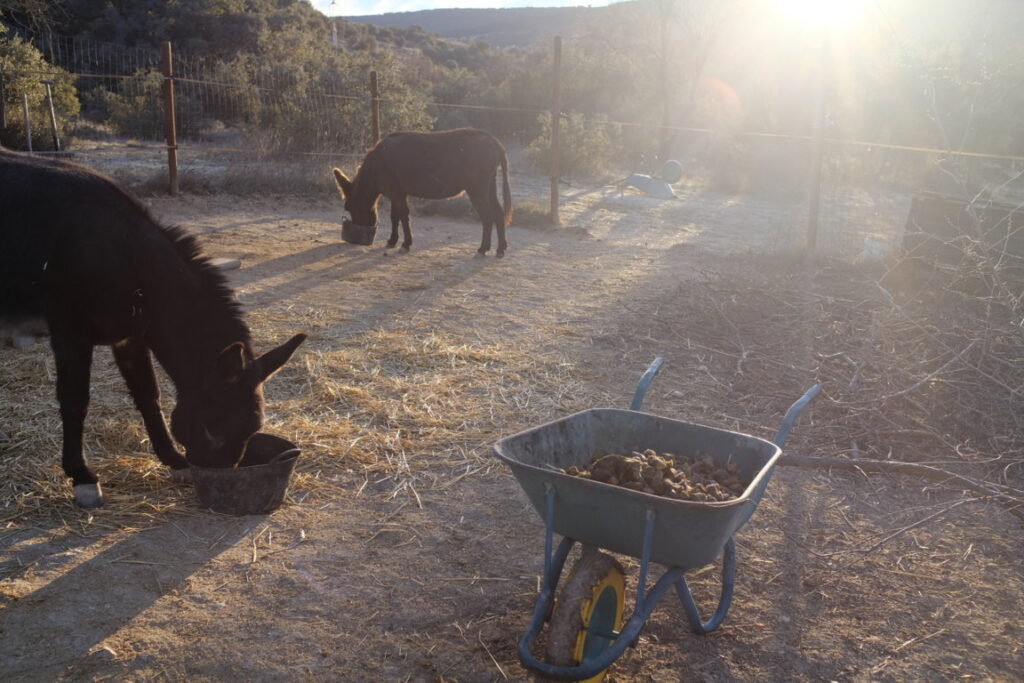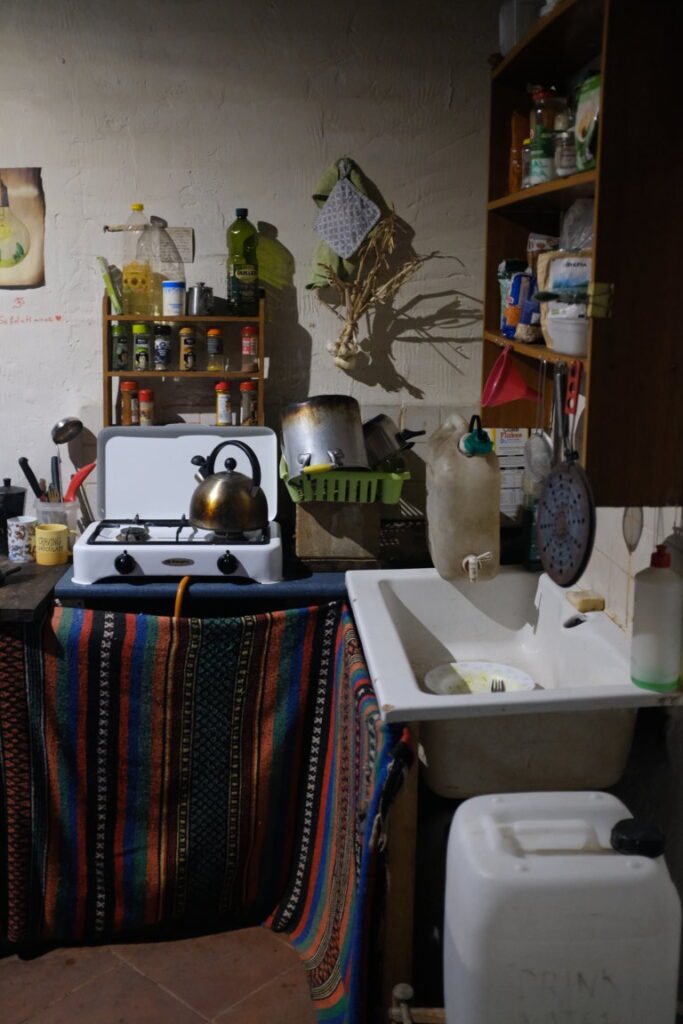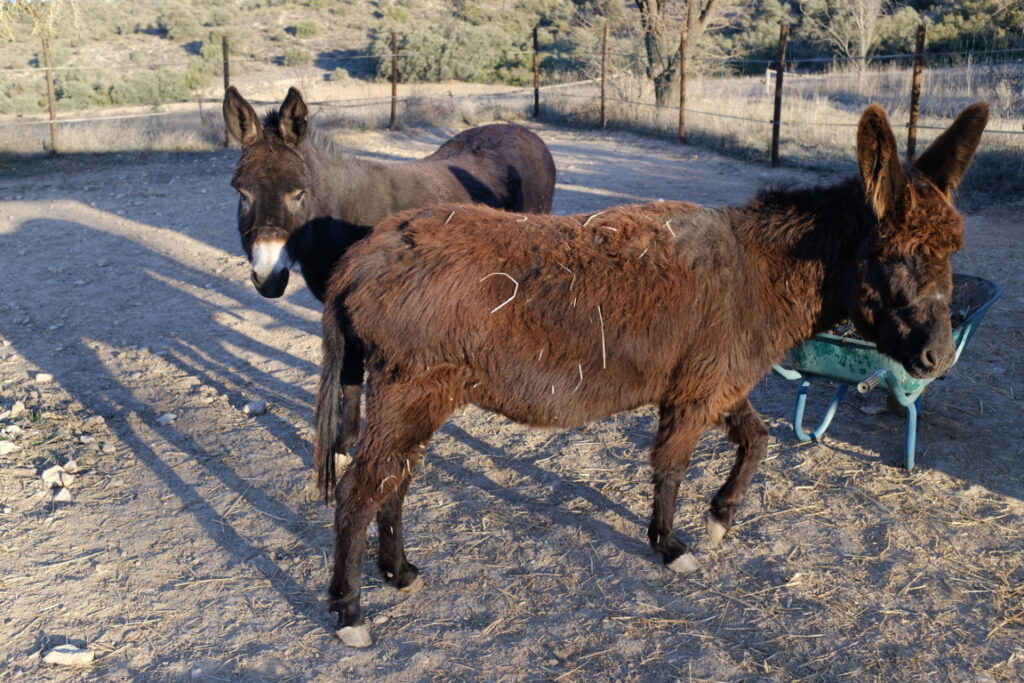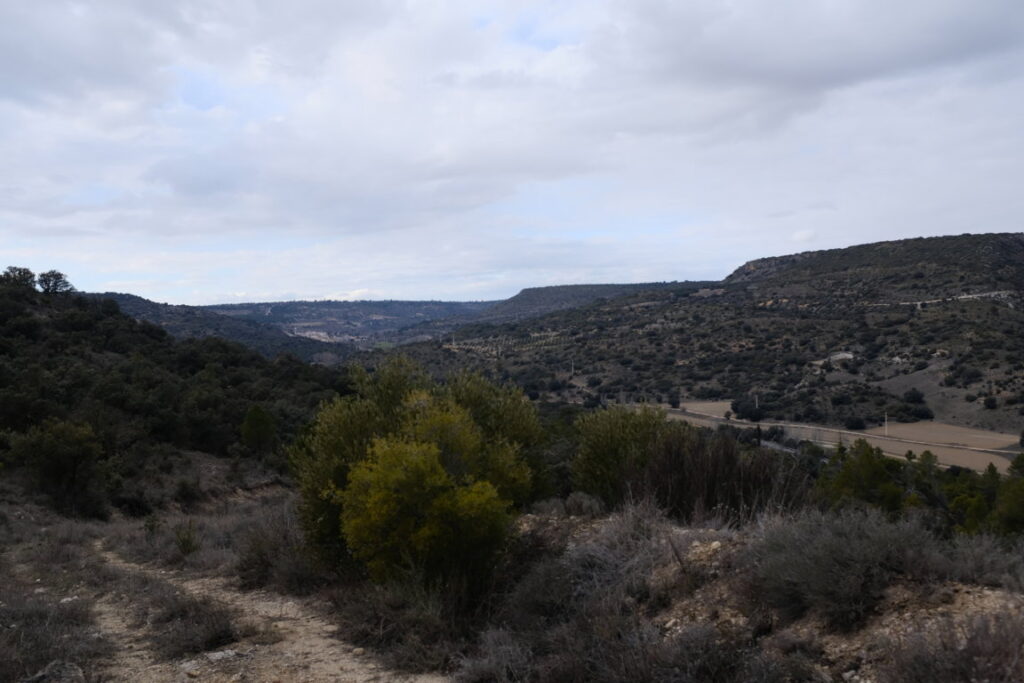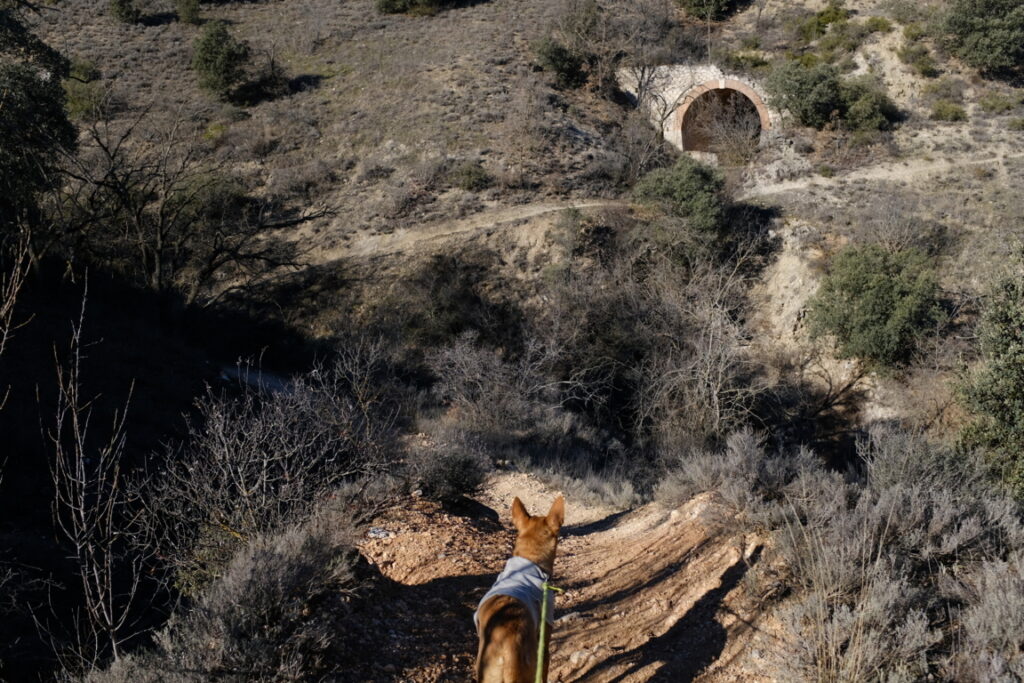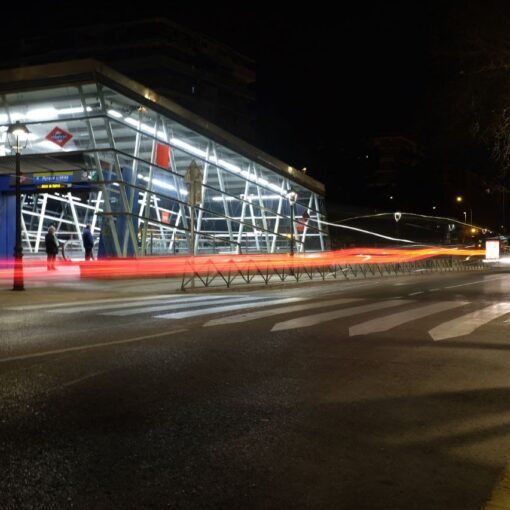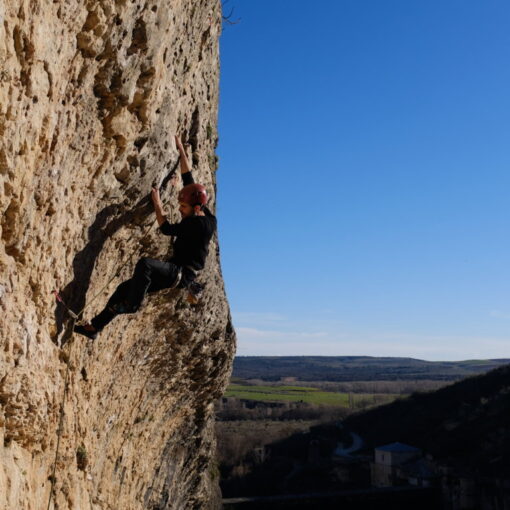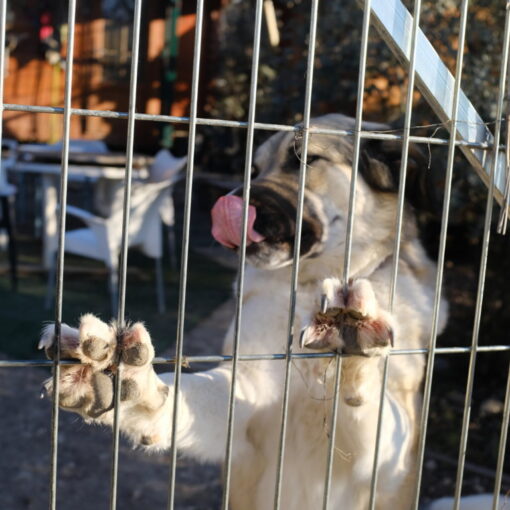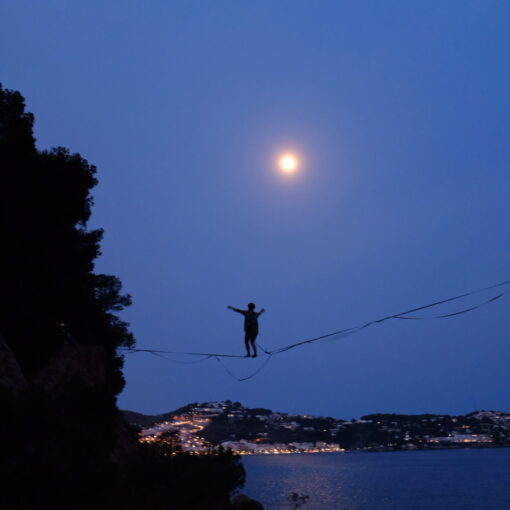Before coming here to do this Workaway I had a similar conversation a few times:
- And what are you going to do in Spain?
- Well, for the first month I’m going to work in the countryside looking after donkeys and dogs.
- How exactly/will you have time to go to the city/will there be other people?
- I really don’t know…
Now that I’ve spent a few days here, I can answer your questions.
At the moment I’m relaxing in the small, poorly insulated hut I live in, which brings me to the first point I want to elaborate: The weather and how to overcome it. Here in the hills around Madrid – I’m near the village of Ambite – there are extreme temperature swings between day and night. The record so far has been 20 degrees (-1 at night and 19 during the day). So clothing changes between shirt and short sleeves during the day; to various jumpers, down jackets, hats and sometimes gloves. The coldest time is usually when I get up. I also have to keep Enco, one of the dogs I’m walking, warm because he has short fur and can’t stand the cold.
Luckily the cabin has a wood-burning stove that allows me to heat my small home at night. It doesn’t hold the heat very well, but I managed to get up only once during the night from Monday to Tuesday – a bit after three o’clock in the evening – to relight the fire. The first night I got up three times. When the fire goes out and the embers are low, it doesn’t take long for the thin brick walls, the aluminium door and the rest of the cabin to let me know that it’s about 0 degrees outside and that now would be a good time to get up and re-kindle the fire. Anyway, I’m getting there. My pride and joy so far was adding stone around the stove to capture an store some of the heat. I thought that was one of the reasons why I don’t have to get up as much during the night, but I’m not so sure. Also, on Monday I finally understood how the stove works. As you can see in the photo, it opens at the top to add wood. Therefore, if it doesn’t burn well and there is a lot of smoke, it’s very difficult to open and mess with. In these instances I usually end up turning the cabin into a smokehouse.
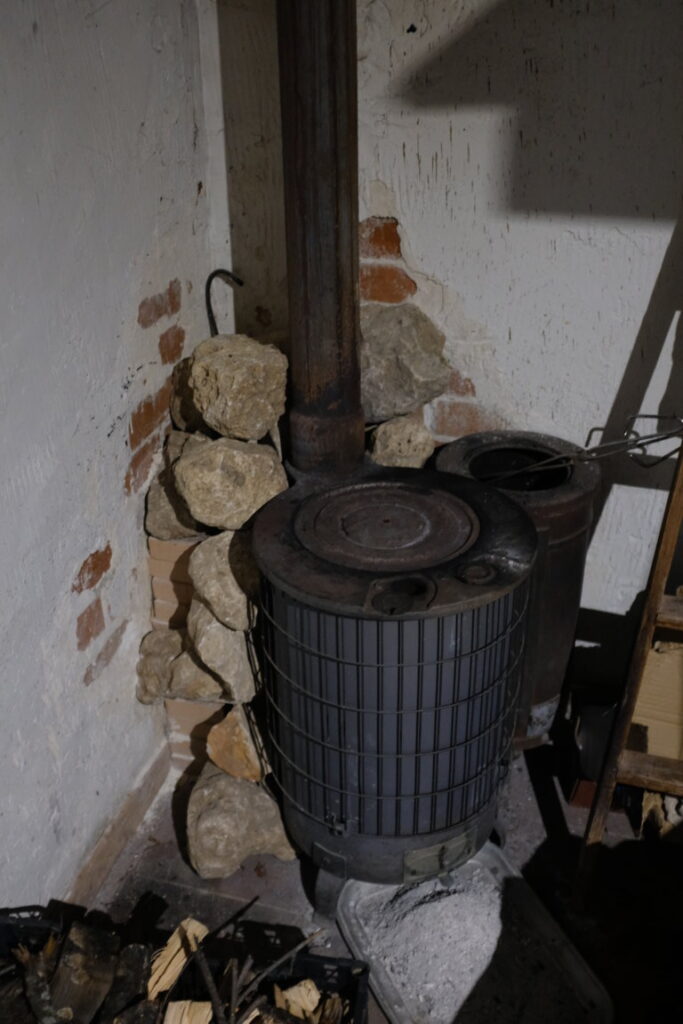
When I’ve made it through the night (it’s not that hard) I get up between 7 and 8 a.m., eat breakfast and get cracking with the tasks that my volunteering here consists of:
- Jacinta and Pedrito – the two donkeys
- Give them their ration of special food, which Jacinta likes very much.
- Clean up the poo in the stable and the paddock, and make sure that Jacinta doesn’t eat Pedrito’s ration too, because he eats slowly and she’s an opportunist.
- Watch the sunrise, enjoy watching how Jacinta plays with her “plate”.
- Give them straw and try to put it in the stable before Jacinta eats it out of the wheelbarrow.
- Add the poo to the mountain of poo for the vegetable garden.
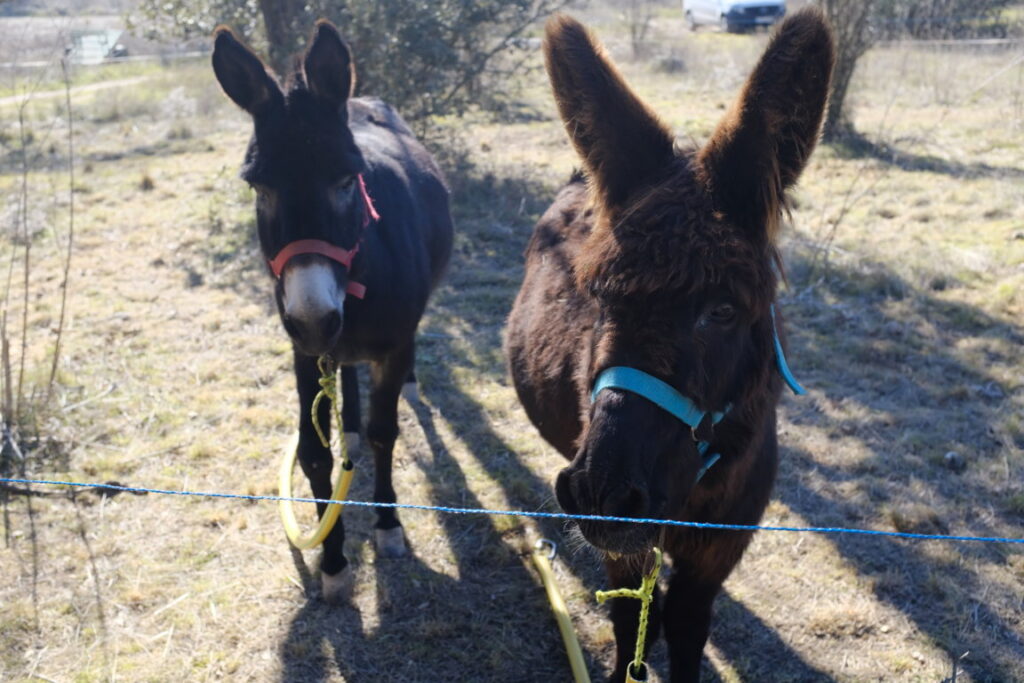
- Enco and Cora – the two dogs
- I give them their food for the day (I always find that they don’t like it as much as donkeys like their straw).
- Then we go for a walk. Between 30 minutes and almost two hours.
- The walk usually involves a lot of untangling of leashes, but I am getting better and better at this.
- Be careful that Cora doesn’t pull me over with her impulsiveness and her god-knows-how-many pounds of pure Mastiff bodymass.
- Enjoy the scenery
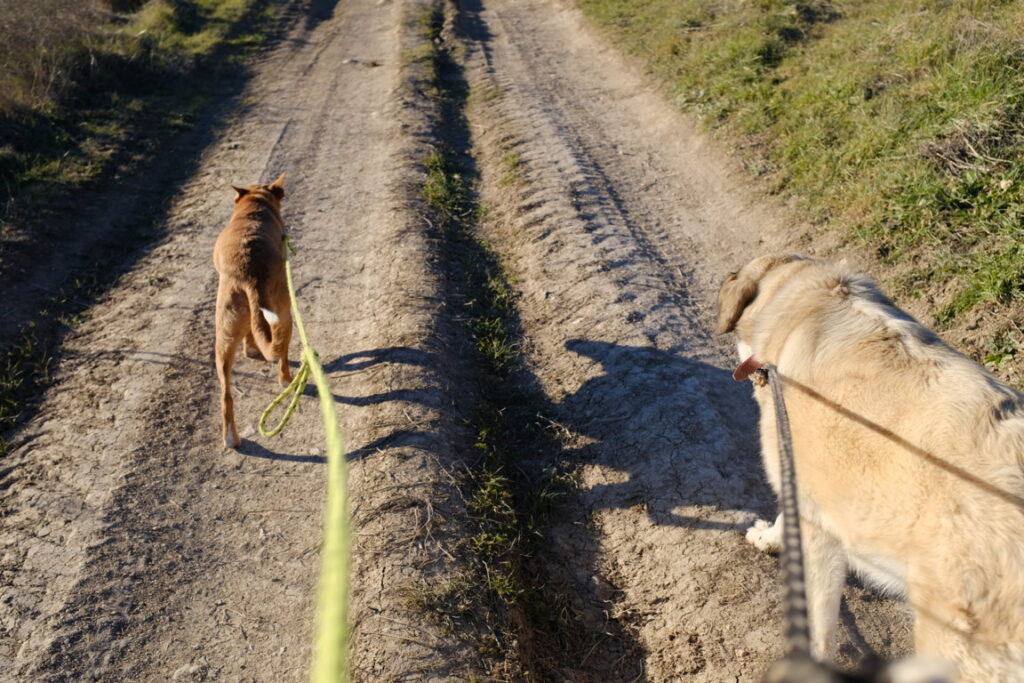
Then I go to remove the anti-freeze fleece from the vegetable garden and enjoy a lot of free time. In the afternoon I take another walk, add some straw to the stable and take the chickens out after hiding the dog food. Cannibalism is not practised here!
There are a few other details that I like. Such as the chickens laying their eggs wherever they want. One or two of them like to put them in the tool shed, in a box full of nails. Also, there are old and broken bicycles that I have started to fix in my spare time. On the weekends there are more people to talk to and do things with. Last weekend we set up a kestrel nest in a tree next to the orchard. The hope is that a pair will nest there and eat the voles that terrorise the vegetables.
I hope this has given you a general idea of how I spend my days here. The plan is to post a new blog every Wednesday until the end of March 2023. So you can keep coming back if you like it.
